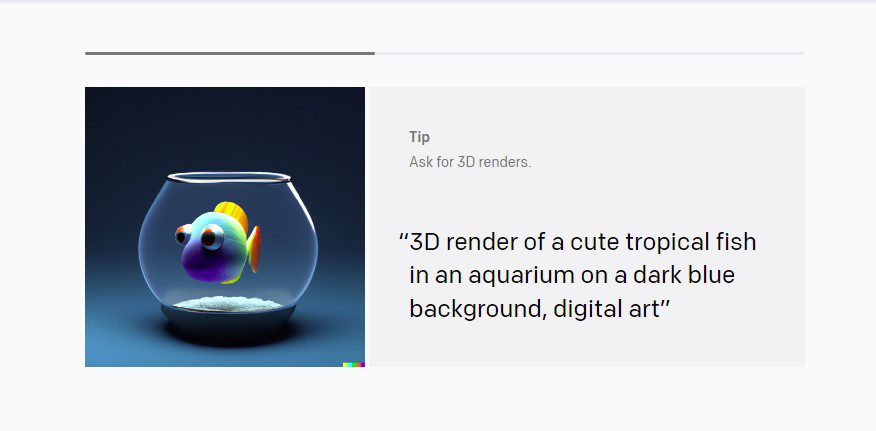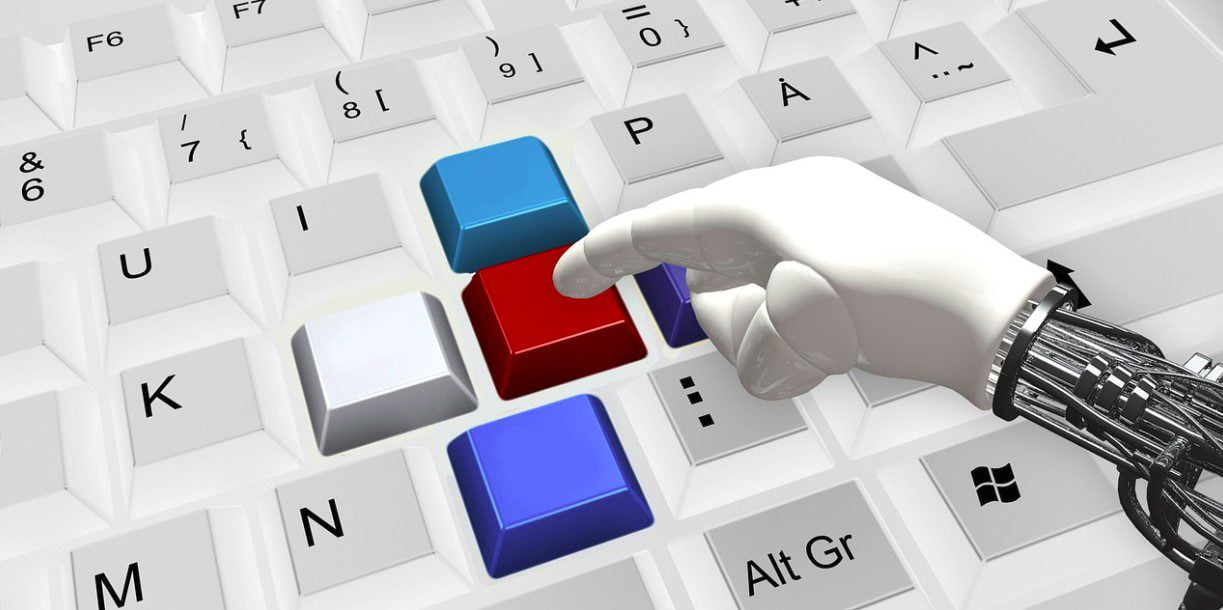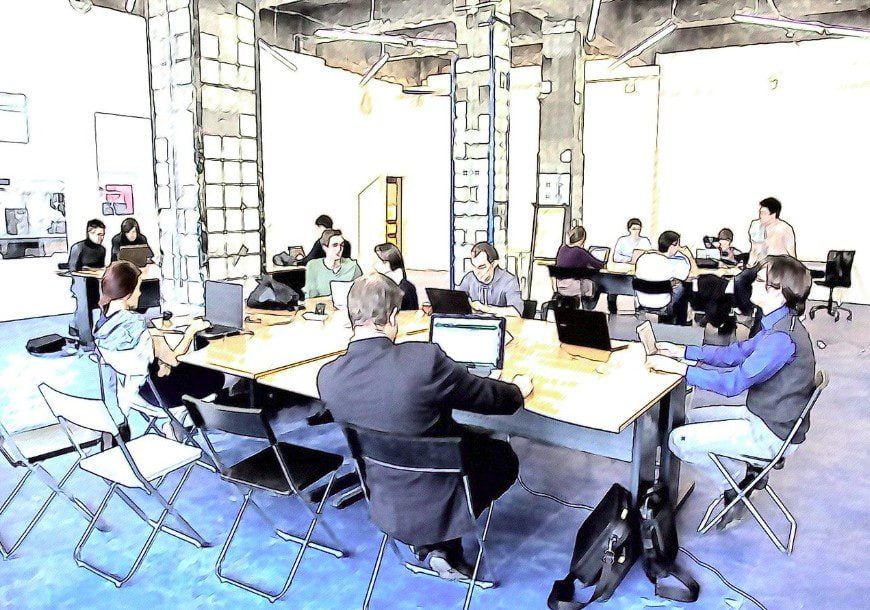Generative AI, also referred to as creative AI, is an innovative technology harnessing machine learning algorithms to produce content, art, music, and more, and it is gaining significant attention due to its potential to disrupt various aspects of the workplace.
Yes, it is true that Generative AI, which is powered by deep learning and neural networks, has opened up avenues for creativity and expression. Its models can generate content that exhibits creativity and originality.
This opens up possibilities for applications in various fields like art, science, design, and entertainment.
The Bad News!
Despite all the goodies in generative AI, it also ships with negative impacts in the labor market.
According to Goldman Sachs,
Shifts in workflows triggered by these advances could expose the equivalent of 300 million full-time jobs to automation
It continues,
roughly two-thirds of U.S. occupations are exposed to some degree of automation by AI
Exactly What is Generative AI?

Generative AI, as a subset of artificial intelligence, specifically focuses on the creative aspect of intelligence. It aims to teach machines how to generate new and original content, often indistinguishable from content created by humans.
Unlike traditional AI systems designed to recognize patterns and make decisions based on existing data, generative AI algorithms learn patterns and structures present in large data sets. They can generate realistic and novel outputs by making predictions based on the patterns they have learned.
Some popular generative AI models include Generative Adversarial Networks (GANs), Variational Autoencoders (VAEs), and Transformers. GANs for one, consists of two neural networks: a generator network and a discriminator network.
A generative adversarial network (GAN) is a machine learning (ML) model in which two neural networks compete with each other by using deep learning methods to become more accurate in their predictions.
Tech Target
The generator network creates new content, while the discriminator network evaluates the generated content. Then it tries to distinguish it from real human-generated content.
Through an iterative training process, the generator network learns to produce content that becomes increasingly difficult for the discriminator network to differentiate.
Generative AI is being used in applications such as natural language generation, image synthesis, video production, and more.
The Most Popular Branches of Generative AI :
Generative AI encompasses several branches that focus on different areas of content creation:

Image Generation
This branch focuses on creating new images using generative AI techniques. It includes subfields like image synthesis, image completion, and image manipulation. Popular techniques for image generation tasks. include GANs, VAEs, PixelCNN, and flow-based models.
Users train a GAN model using a dataset of human faces. The generator network learns to generate synthetic faces, while the discriminator network tries to differentiate between real and fake faces.
Through iterative training, the GAN model improves its ability to generate realistic human faces.
DALL·E2 and related upgrades is a unique example of image creation tool. Created by OpenAI, it stands for “Distributed Architecture for Lifelong Language Encoding.” It is a generative model that combines the principles of transformers and autoencoders to generate images from textual descriptions.

Researchers train the DALL·E model on an extensive dataset that contains pairs of images and their corresponding textual descriptions.
DALL·E has demonstrated impressive capabilities in generating unique and diverse images based on textual prompts. It can generate images in a wide range of styles and contexts. This makes it a valuable tool for creative tasks such as concept art, storyboarding, and visual design.
Another popular tool is Midjourney, which opens up exciting possibilities. It can aid in the creation of lifelike virtual environments, realistic characters, and stunning special effects for movies, video games, and virtual reality experiences.
Text Generation
Text generation involves creating coherent and contextually relevant text. This branch includes tasks like language modeling, machine translation, text summarization, dialogue generation, and story generation.
People often use autoregressive models, Seq2Seq models, and transformers for text generation tasks.
GPT (Generative Pre-trained Transformer) Models: GPT models, such as Chat GPT-4, are state-of-the-art language models that employ the Transformer architecture. ChatGPT is a powerful generative AI tool that can generate coherent and contextually relevant text across various domains. It finds application in tasks like content creation, chatbots, and creative writing.
Video & Voice Generation
DeepArt and HeyGen, AI tool based on neural style transfer, can be used to apply artistic styles to existing videos. Then they can create visually appealing and unique effects.
Another generative AI tool used to generate videos is the DALL-E2 model. While DALL-E2 is mainly famous for generating images, it also has the capability to produce short video sequences. It does this by combining image generation capabilities and techniques like frame interpolation.
Neuralangelo from NVIDIA can create 3D reconstruction using neural networks from 2D video clips. It can turn 2D video clips into detailed 3D structures, and generate lifelike virtual replicas of buildings, sculptures and other real-world objects.
Neuralangelo works by first estimating the depth of each pixel in a video clip. It uses a deep learning algorithm trained on a large dataset of images and corresponding depth maps. Once you have the depth of each pixel, Neuralangelo can utilize this information to reconstruct the 3D structure of the scene.
… Deepfakes …
Deepfake video and audio refer to the use of artificial intelligence (AI) techniques to generate or manipulate audio-visual recordings. This is done in a way that mimics someone else’s voice or alters the content of the video or audio.
Deepfakes web, Lensa AI, DeepSwap, Synthesia, VoiceLab, etc., are sample Deepfake technology tools that use artificial intelligence and machine learning algorithms to create or manipulate videos and audios. They are capable of altering the appearance or actions of people depicted in videos and audios.
It involves generating highly realistic synthetic media that can be difficult to distinguish from genuine footage.
Deepfake models can understand and mimic the facial expressions, gestures, and speech patterns of the individuals in the training data. Once trained, they can generate new videos by swapping faces, altering facial expressions, or even manipulating the entire appearance of a person.
For example, a deepfake model can superimpose the face of one person onto the body of another. This will make it appear as if the person in the video is saying or doing things they never actually did.
Recurrent Neural Networks (RNNs) have been used in the context of deepfakes. This refers to the synthesis or alteration of audio, images, or videos to make them appear real, when they are actually manipulated or fabricated.
While deepfake technology has the potential to create entertaining and creative content, it also raises concerns about its potential misuse. This technology raises concerns regarding privacy, consent, and the potential for misuse, such as impersonation or spreading disinformation.
Music Generation
Music generation is a branch of generative AI that focuses on creating new musical compositions or generating music in a specific style.
Magenta’s MusicVAE is a generative AI tool used to generate musical melodies. It uses a Variational Autoencoder (VAE) architecture to learn a latent space representation of musical sequences. It can generate new melodies based on learned representation.
Beatoven.ai is a music publisher that uses artificial intelligence (AI) to create royalty-free music for businesses and individuals. Beatoven.ai’s AI music generator can create music in a variety of genres, including pop, rock, electronic, and classical. It can also generate music with specific moods, such as happy, sad, or angry.
Beatoven.ai’s music is royalty-free, which means users do not have to pay royalties to the publisher.
Speech Synthesis
Speech synthesis involves generating human-like speech or converting text into spoken words. This branch includes technologies like text-to-speech (TTS) synthesis and voice cloning.
For speech synthesis tasks, professionals use deep learning models like auto-regressive models and neural vocoders.
One popular generative AI tool used for speech synthesis is Tacotron 2. Tacotron 2 is an advanced neural network-based model that can generate human-like speech from given text input.
Simulation and Virtual Environments
Generative AI is additionally applied to craft simulated environments or virtual worlds. These environments find utility in training AI agents, testing scenarios, or delivering immersive experiences.
GANs, reinforcement learning, and physics-based models are often utilized in this branch.
One popular generative AI tool used for generating simulations and virtual environments is Unity ML-Agents. Unity ML-Agents is an open-source toolkit developed by Unity Technologies that combines
Code Generation
Generative AI techniques can be used to automate or assist in the process of creating code. By training generative models on large code repositories or samples, these models can learn the syntax, structure, and patterns of programming languages and generate new code based on that knowledge.
Generative models can be used to provide intelligent code completion suggestions as developers type. These models learn from existing code to predict the most likely code completions based on the context. This can save time and reduce errors.
These models can also generate entire code snippets or functions based on a given task or problem description. By training the models on code examples and their corresponding descriptions, they can learn to generate code that solves specific programming tasks.
Out of the many, Codeium and DeepCode are AI-powered code review tools that analyze code repositories and provide automated suggestions for bug fixes, performance improvements, and security enhancements.
And finally, Codex, powered by the GPT-3 language model, is designed to assist developers to write code. It can generate code suggestions, complete code snippets, and provide contextual help within integrated development environments (IDEs) like Visual Studio Code.
Other Creative Applications
Artists and designers can leverage generative models to generate unique and novel artworks. These models can be trained on existing artwork datasets, to allow them to learn patterns, styles, and aesthetics.
By combining these learned elements with their own creativity, artists can produce compelling and original pieces of art.
Sample AI tools here:
- Media.io for creating avatars
- Nova AI for creating TikToks
- Cleanup for editing pictures
- Prezo for creating PPTs
- Wisecut for editing videos
How Generative AI Will Enhance & Disrupt the Workplace!

As generative AI continues to advance, it will disrupt certain jobs that primarily involve routine processes. Workers in industries like manufacturing, data entry, or customer service might face displacement because AI systems can perform these tasks more efficiently.
1. Content Creation
Generative AI can automate and therefore disrupt the creation of written content, such as articles, reports, and social media posts. It can generate high-quality text that closely resembles human-written content, saving time and effort for content creators.
Using tools such as OpenAI’s ChatGPT, users can create content that is similar to what humans can.
However, this may also raise concerns about authenticity, plagiarism, and the potential for misuse.
Another popular content creation tool is Rytr. Rytr AI is an AI writing assistant that helps create high-quality content, in just a few seconds, at a fraction of the cost!
2. Design and Creativity
Artificial intelligence (AI) can enhance and disrupt the creative and design industries. AI-powered tools are automating many of the tasks that were once done by human designers.
AI-powered design tools can assist in generating creative content, ranging from logos and graphics to website layouts. By leveraging generative AI algorithms, designers can receive suggestions, inspiration, or even fully generated designs that align with their specifications.
AI is also opening up new possibilities for creative expression. For example, AI can be used to create realistic 3D models, generate realistic images, and compose music.
Generative AI can also assist in generating game levels, characters, and narratives, providing game designers with a wealth of creative possibilities.
3. Training and Education
Generative AI can democratize access to education and training, to make learning more engaging and accessible.
AI-powered tools can generate interactive learning materials, simulations, and become virtual tutors. These tools can adapt to individual learners’ needs, provide immediate feedback, and offer personalized learning paths.
Artificial intelligence (AI) is being used in education in a number of ways, including:
- Personalized learning: AI can be used to personalize learning for each student by tailoring the content, pace, and difficulty of instruction to the student’s individual needs. This can be done by using machine learning to analyze student data, such as test scores, homework grades, and class participation.
- Adaptive assessment: AI can be used to create adaptive assessments that adjust the difficulty of questions based on the student’s performance. This can help students to master the material at their own pace and to avoid becoming frustrated by questions that are too difficult or too easy.
- Virtual tutors: AI can be used to create virtual tutors that can answer students’ questions and provide additional feedback. This can be especially helpful for students who need extra help or who are working on independent projects.
- Gamification: AI can be used to gamify learning by adding elements of games, such as points, badges, and leaderboards. This can help to make learning more engaging and motivating for students.
- Virtual reality (VR): AI can be used to create VR experiences that can transport students to different historical periods, scientific laboratories, or other learning environments. This can help students to learn more effectively by providing them with a more immersive and interactive learning experience.
4. Software Programming
Aside from white collar jobs, core skills such as computer programming will also feel the heat. Research indicates that AI language models undergo training using extensive repositories of code. This makes them quite smart on programmimg tasks.
Microsoft and Github findings have shown how programmers using AI complete their tasks 56% faster than those who don’t. Big tech companies are actually fast integrating AI in their effort to supercharge programming.
The CEO of Stability AI has actually claimed
there’s no programmers in five years.
GoldmanSachs
Other Tasks and Jobs That Generative AI Will Disrupt:
Generative AI has the potential to automate and hence disrupt repetitive and mundane tasks that don’t require human creativity or decision-making. This can free up human workers to focus on more complex and strategic work.
AI can do simple tasks such as:
- Music Composition: Generative AI can compose original music by analyzing existing compositions and creating new melodies, harmonies, and rhythms.
- Video Editing: AI can automate the video editing process by analyzing and organizing raw footage, adding transitions, effects, and even generating captions or subtitles.
- Virtual Assistant: Generative AI can enhance virtual assistants, such as chatbots, by providing personalized natural language responses and generating human-like conversations.
- Data Analysis and Reporting: Generative AI can process large amounts of data, analyze patterns, and generate comprehensive reports or visualizations. This is valuable in fields such as finance, market research, and scientific analysis.
- Translation and Localization: AI-powered translation models can automate the process of translating written or spoken content between different languages.
- Data Entry: AI can automate the process of entering data from various sources into databases or spreadsheets better than humans.
- Image and Video Tagging: AI algorithms can analyze and tag images and videos based on their content, and can categorize large media libraries.
- Content Moderation: Generative AI can assist in identifying and flagging inappropriate or offensive content. This helps to automate the content moderation process on platforms such as social media and other online forums.
- Fraud Detection: AI algorithms can analyze patterns and detect anomalies in financial transactions or online activities, helping to identify and prevent fraudulent behavior.
- Speech Recognition: Generative AI can convert spoken language into written text, facilitating transcription services, voice commands, and accessibility features for individuals with hearing impairments.
- Social Media Management: AI can assist in managing social media accounts by scheduling posts, analyzing engagement metrics, and suggesting content strategies based on audience preferences.
- Virtual Reality/Augmented Reality Generation: Generative AI can assist in generating virtual or augmented reality environments, objects, and effects, enhancing the immersive experiences created by these technologies.
The Way Forward for Humans!

Yes, the integration of generative AI into the workforce will disrupt a lot, and will definitely require workers to develop new skills.
To stay relevant, individuals may need to reskill or upskill to fulfill these new roles.
1. Embrace Creativity and Critical Thinking
Focus on developing skills that are difficult to automate, such as creativity, critical thinking, problem-solving, and innovation. These skills enable individuals to provide unique insights, come up with novel ideas, and make complex decisions that machines cannot replicate.
2. Cultivate Emotional Intelligence
Enhance your emotional intelligence by developing skills in empathy, collaboration, and communication. These interpersonal skills are valuable in jobs that involve human interaction, such as customer service, leadership, and teamwork, where emotional connections and understanding are crucial.
3. Acquire Technical Skills
Develop a solid foundation in technology and digital literacy. Familiarize yourself with programming languages, data analysis tools, and other technical skills relevant to your industry. This understanding enables you to work alongside generative AI systems.
4. Specialize in Complex Problem Areas
Focus on areas with complexity and ambiguity. These areas have not yet achieved full automation. Become an expert in niche domains that require deep domain knowledge and expertise, making it harder for AI systems to replicate your skills.
For example,
Medical Diagnosis: Specializing in rare diseases or complex cases that demand deep medical knowledge and intricate diagnostic skills can make it challenging for AI to fully replicate your expertise.
Financial Planning: Becoming an expert in personalized financial strategies for unique client situations that require a deep understanding of individual needs and goals can differentiate your services from automated financial advisors.
Research and Development: Specializing in cutting-edge research and innovation within a specific scientific field can keep you at the forefront of advancements, as AI may struggle to replicate the creativity and adaptability required for groundbreaking discoveries.
Counseling and Therapy: Providing specialized mental health counseling or therapy tailored to individual needs and emotions can be a resilient niche in the face of AI in the healthcare sector.
Education and Mentorship: Offering personalized, one-on-one educational experiences or mentorship in areas requiring critical thinking and emotional intelligence can be difficult for AI to replace.
Environmental Conservation: Specializing in complex ecological and environmental challenges that demand a deep understanding of ecosystems and local dynamics can be crucial in addressing environmental issues that AI may not fully comprehend.
5. Adaptability and Agility
Cultivate adaptability and agility in the face of changing technology and job market dynamics.
Recognize that the job market will continue evolving, and the impact of generative AI will vary across industries. Stay informed, network with professionals in your field, and monitor emerging trends to adapt your skill set accordingly.
6. Cross-disciplinary Skills
Explore interdisciplinary skills that bridge different domains and industries. By combining knowledge from multiple fields, you can bring unique perspectives and value to organizations. For example, blending expertise in data analysis with marketing can lead to insights-driven strategies.
7. Lifelong Learning
Commit to lifelong learning to stay updated with emerging technologies and industry trends. Take advantage of online courses, workshops, and training programs to acquire new skills and knowledge that align with the evolving job market.
The Role of Governments & Other Authorities

Developing and enforcing ethical frameworks and regulations around the use of generative AI can protect workers’ rights, ensure fairness, and prevent misuse of the technology.
Governments, policymakers, and industry stakeholders need to collaborate to establish guidelines and regulations that address potential risks and protect the interests of both workers and society.
Emphasizing the importance of human-AI collaboration rather than complete replacement is vital. Recognizing the unique strengths of both humans and AI systems and finding ways to integrate them can lead to more productive and meaningful work experiences.
This involves designing AI systems that augment human capabilities, encourage creativity, and support decision-making processes.
Likewise, establishing robust social safety nets is crucial to support individuals affected by job disruption. This may include unemployment benefits, income support programs, healthcare provisions, and other forms of assistance to ensure a smooth transition for displaced workers.
The Final Word!
It is important to note that generative AI is a tool to enhance creativity rather than disrupt it. Human input, intuition, and judgment remain vital in the creative process.
Generative AI models serve as collaborators, sources of inspiration, and creative partners, ultimately expanding the creative horizons for artists, musicians, writers, and designers.
By adapting to changing technological landscapes, acquiring new skills, and leveraging the unique qualities of human intelligence, individuals can seize these new opportunities and contribute to a future where humans and automation coexist synergistically.
Like it has been in the past
jobs displaced by automation have historically been offset by the creation of new jobs,
Goldman Sachs
While it is true that generative AI and automation will disrupt certain industries and job roles, it will also create new avenues for human employment and professional growth.





Leave a Reply